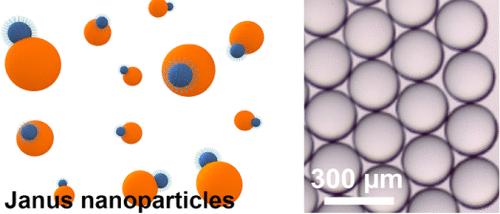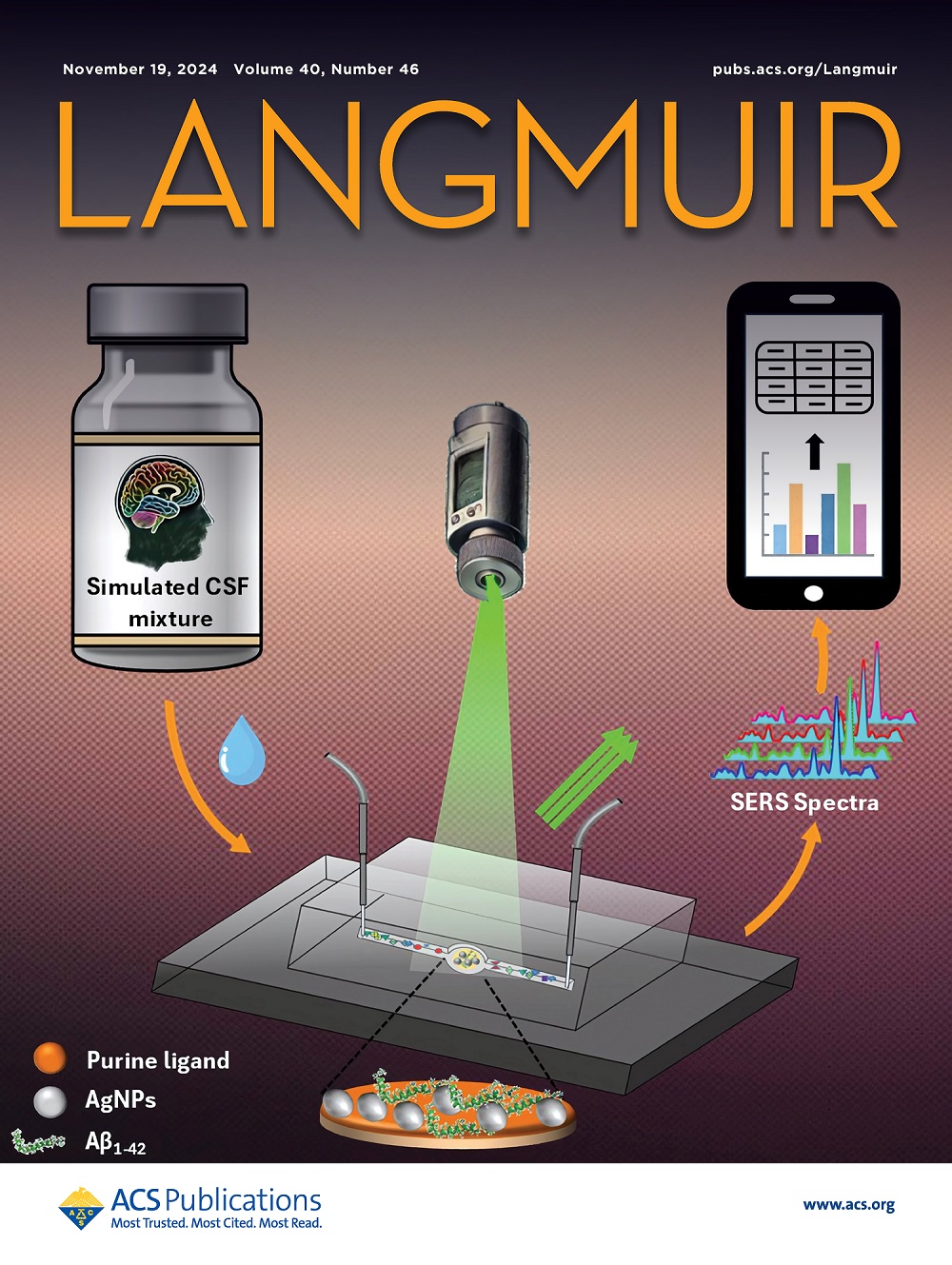Encapsulation of Oil Droplets Using Film-Forming Janus Nanoparticles
IF 3.7
2区 化学
Q2 CHEMISTRY, MULTIDISCIPLINARY
引用次数: 0
Abstract
Polymer Janus nanoparticles with one hard cross-linked polystyrene lobe and one soft film-forming poly(methyl methacrylate-co-butyl acrylate) lobe were synthesized by reversible addition–fragmentation chain transfer (RAFT)-mediated emulsion polymerization. The Janus nanoparticles adsorbed to oil/water and air/water interfaces, where the soft lobes coalesced, forming films of thickness between 25 and 250 nm; droplets of silicone oil could be stably encapsulated in polymer in this way. When prepared by mechanical mixing without additives, capsules of diameter 5–500 μm could be prepared, and with additives and application of heat, capsules of diameter around 5 μm were achieved, even with highly viscous silicone oil (20,000 cSt). In a microfluidic device, monodisperse capsules of diameter 180 μm could be formed. The particles were weakly surface-active and spontaneously assembled themselves at air/water interfaces. When added into a paint formula, the oil capsules improved the stain resistance of paint films. Silicone oil leakage from the capsules could be mitigated by incubating the capsules with silica nanoparticles, on which silicone oil reacts, creating grafted layers.

利用成膜 Janus 纳米粒子封装油滴
本文章由计算机程序翻译,如有差异,请以英文原文为准。
求助全文
约1分钟内获得全文
求助全文
来源期刊

Langmuir
化学-材料科学:综合
CiteScore
6.50
自引率
10.30%
发文量
1464
审稿时长
2.1 months
期刊介绍:
Langmuir is an interdisciplinary journal publishing articles in the following subject categories:
Colloids: surfactants and self-assembly, dispersions, emulsions, foams
Interfaces: adsorption, reactions, films, forces
Biological Interfaces: biocolloids, biomolecular and biomimetic materials
Materials: nano- and mesostructured materials, polymers, gels, liquid crystals
Electrochemistry: interfacial charge transfer, charge transport, electrocatalysis, electrokinetic phenomena, bioelectrochemistry
Devices and Applications: sensors, fluidics, patterning, catalysis, photonic crystals
However, when high-impact, original work is submitted that does not fit within the above categories, decisions to accept or decline such papers will be based on one criteria: What Would Irving Do?
Langmuir ranks #2 in citations out of 136 journals in the category of Physical Chemistry with 113,157 total citations. The journal received an Impact Factor of 4.384*.
This journal is also indexed in the categories of Materials Science (ranked #1) and Multidisciplinary Chemistry (ranked #5).
 求助内容:
求助内容: 应助结果提醒方式:
应助结果提醒方式:


